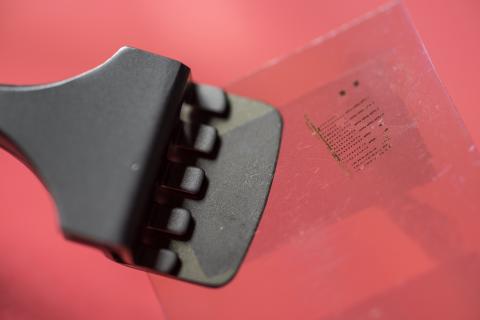Hidden inside your smartphone are micron-scale sensors that detect acceleration, rotation and more. Georgia Tech researchers are developing similar micro-electromechanical systems -- known as MEMS -- for applications ranging from health care to agriculture.
Micro-electromechanical systems, or MEMS, may not be on your mind, but there could be some in your pocket.
Your smartphone likely uses a dozen or so tiny — yet powerful — MEMS sensors to support its sophisticated functions. And that late-model car undoubtedly carries scores of devices based on MEMS and other sensing technologies.
Typically sized at the micron scale — millionths of a meter — MEMS devices use minuscule moving parts to perform a broad range of sensing tasks. Small as they are, they can detect sound, motion, position, force, pressure, chemicals, bacteria, and numerous other things worth knowing about. Note that these miniaturized sensors don’t always have moving parts, and a broader term — microsystems — is sometimes used rather than MEMS.
At Georgia Tech, more than 20 research teams focus on MEMS-related research and development. Supporting them is the Institute for Electronics and Nanotechnology (IEN), one of Georgia Tech’s nine Interdisciplinary Research Institutes. IEN’s extensive shared-user facilities, including advanced labs and cleanrooms, are used by as many as 200 Georgia Tech faculty, graduate students, and postdoctoral researchers who work on MEMS and other microsystems.
To read more about this research area, please visit this article in Georgia Tech's Research Horizons magazine.
Additional Images

